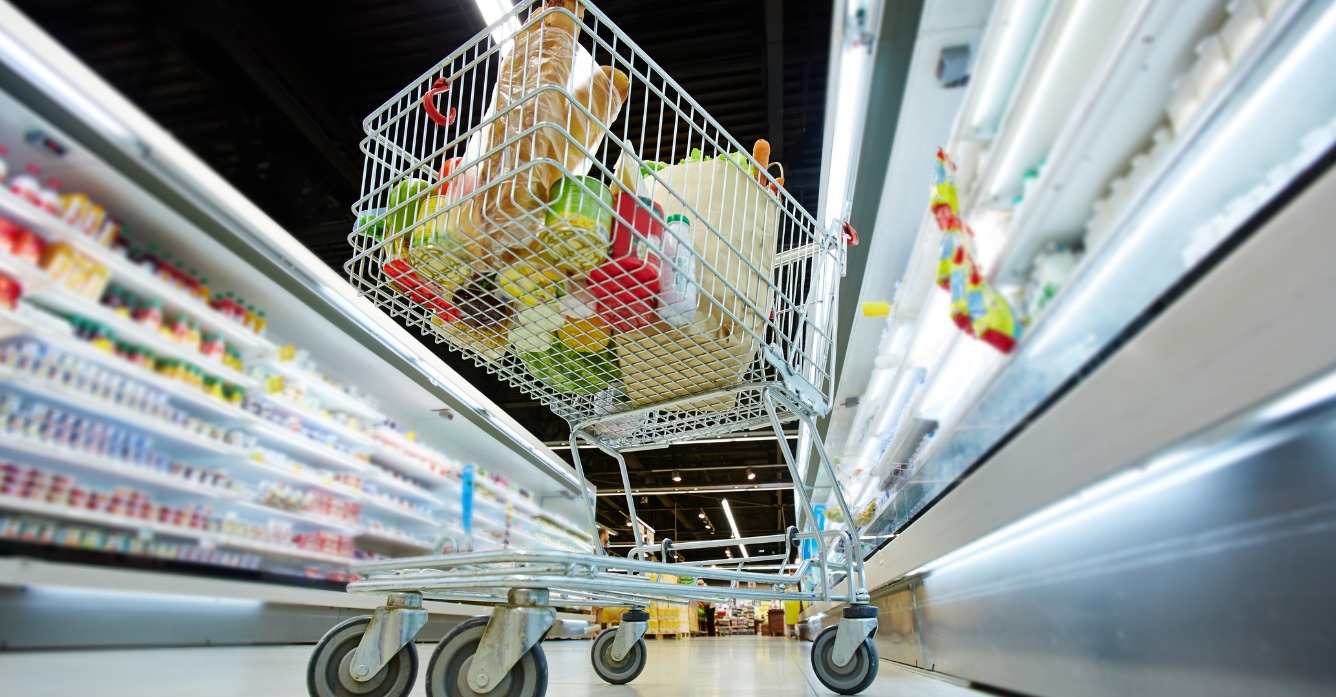Jacob Stevens, Retail Labor Manager
Steve Lavenski, Industrial Engineering Manager
As the COVID-19 pandemic continues sweeping the globe, the world is changing. When the virus first hit, a panic set in that sent people rushing to their local grocery stores to stock up on anything and everything they could. Things have stabilized since the initial frenzy, but it has become apparent there will be some long-term changes in how people shop for their groceries and what they shop for. So, what are these changes, and how can retail chains navigate that change effectively?
One of the biggest shifts in grocery retail is the transition to online grocery shopping. Online grocery sales were already on the rise but are now spiking as people practice social distancing measures and limit their exposure to the outside world. According to Coresight Research’s U.S. online grocery survey 2020, online grocery sales grew 22 percent in 2019 and, propelled by the pandemic, could surge to 40 percent growth in 2020.
Not everyone is shopping from home though, and those who are venturing out to stores have very different expectations now. Cleanliness has quickly jumped to the top of the list when it comes to consumer priorities. To keep consumers and associates safe, many new sanitation practices are being put into effect. Many locations are implementing things such as plexiglass separators, PPE requirements, and one-way shopping lanes, in addition to constant sanitation and cleaning.
What does this mean for labor?
These changes in best practices and standard operating procedures are going to mean that retail chains will see a significant change in how and where they use their labor. More online orders mean more hours shifted to and dedicated to online fulfillment. More intense sanitation practices mean more labor will need to be dedicated to keep up with the requirement.
With things changing so rapidly, how does a retail organization keep up with, and stay ahead of these changes? Retail organizations that have implemented a standards-based approach will likely have an immediate advantage here. Standards analysis allows companies to quickly and easily understand where and when they need to shift labor. Knowing exactly how much time will be required to complete these new activities and being able to easily adjust forecasts to include this time will ensure that retail chains are able to make the right labor decisions for them.
The shift in preferences is not limited to how customers are shopping, but also now what customers are shopping for. Over the past few years, we have seen a surge in the implementation of the “grocerant” idea. Grocery stores have been putting more emphasis on ready-made meals, prepared foods and hot bars. However, with consumers rethinking how they shop due to the pandemic, things such as salad bars and hot bars, for now, seem to be a thing of the past. Customers are passing up on prepared foods and the premade meals and stocking up instead on frozen meals and meats. We continue to see an increase in non-perishable items, as well as sanitation materials. So how does an organization keep up with these changing SKUs? How can a retail organization leverage its data to ensure its product offerings are in line with these new preferences?
Analysis is key
While it is easy to make knee-jerk decisions in times of uncertainty, it is best to carefully analyze the history of your product offerings and methodically adjust SKUs available for purchase across each store. One may find certain instances where instead of removing SKUs in total from your supply chain to cut costs, it is more profitable and less costly to adjust the assortment based on true demand in a geographic or smaller demographic region. Top retailers analyze their SKU assortment by tying their UPC movement to store sales and labor hours. A solid workforce management solution will be able to assist them in the business decision whether to remove a SKU chainwide to bring in a more profitable offering, or to allocate SKUs in a different manner to optimize profitability.
As the world slowly recovers from this pandemic, will we see a permanent change in how people shop and what they shop for, or will things go back to what they were before? We will not truly know until the smoke clears. However, it is clear now that to be successful, organizations need the proper tools to navigate this quickly changing terrain. Whether that be a standards analysis tool to quickly determine how a new process or procedure is going to affect your labor, or a SKU rationalization tool to help analyze the change in customer item preference. In this day and age, it is increasingly important to be prepared for large-scale and fast-moving shifts in customer preferences. The faster and more efficiently an organization can transform to meet these shifts, the more successful and trusted it will be.




